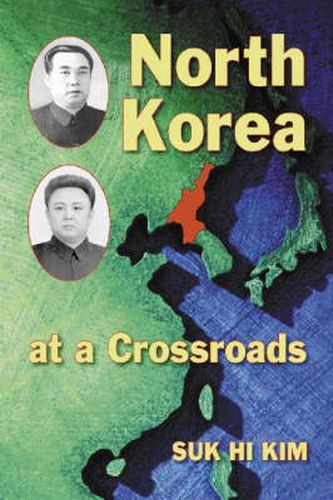Readings Newsletter
Become a Readings Member to make your shopping experience even easier.
Sign in or sign up for free!
You’re not far away from qualifying for FREE standard shipping within Australia
You’ve qualified for FREE standard shipping within Australia
The cart is loading…






Some 50 years after war, in 2003 the Korean peninsula remains divided at the 38th parallel. The end of the Cold War in 1989 brought changes to many communist states, but North Korea remains embroiled in international crises. Looking forward, North Korea seemingly faces three choices: collapse, further war, or peaceful reunification with the south. This historical and political analysis covers the period from the division of the peninsula in 1948 to the future of North Korea beyond 2003. Topics such as the Korean War, Kim Il Sung, famine, the economic collapse of the 1990s, Kim Jong Il, South Korea’s sunshine policy, nuclear ambitions,
rogue state
status, the tougher line taken by the United States State Department in 2001, George W. Bush’s
axis of evil
remark made during his 2002 State of the Union address, and the state of diplomatic relations are covered. The final chapter considers the case for reconciliation. Appendix A offers a chronology of the Korean Peninsula from 2333 BCE to 2003 CE and appendix B is a directory of Korean Studies institutes and think tanks. Tables and statistics are integrated throughout the text and student aids accompany each chapter, including lists of further reading, key terms and questions.
$9.00 standard shipping within Australia
FREE standard shipping within Australia for orders over $100.00
Express & International shipping calculated at checkout
Some 50 years after war, in 2003 the Korean peninsula remains divided at the 38th parallel. The end of the Cold War in 1989 brought changes to many communist states, but North Korea remains embroiled in international crises. Looking forward, North Korea seemingly faces three choices: collapse, further war, or peaceful reunification with the south. This historical and political analysis covers the period from the division of the peninsula in 1948 to the future of North Korea beyond 2003. Topics such as the Korean War, Kim Il Sung, famine, the economic collapse of the 1990s, Kim Jong Il, South Korea’s sunshine policy, nuclear ambitions,
rogue state
status, the tougher line taken by the United States State Department in 2001, George W. Bush’s
axis of evil
remark made during his 2002 State of the Union address, and the state of diplomatic relations are covered. The final chapter considers the case for reconciliation. Appendix A offers a chronology of the Korean Peninsula from 2333 BCE to 2003 CE and appendix B is a directory of Korean Studies institutes and think tanks. Tables and statistics are integrated throughout the text and student aids accompany each chapter, including lists of further reading, key terms and questions.